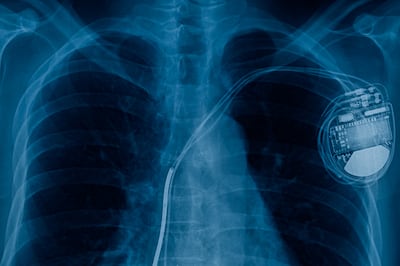
It’s been a while since we had regular headlines about the potential health risks of mobile phones and specifically concerns that the radio frequency (RF) energy they emit could cause cancer.
So what does the latest research say?
Mobile phones emit low levels of RF energy, a type of non-ionising radiation. The available scientific data on exposure to RF energy shows no categorical proof of any adverse biological effects other than tissue heating. In addition, public health monitoring has found no association between exposure to radio frequency energy from cell phone use and health problems.
According to the US National Cancer Institute, “there is currently no consistent evidence that non-ionising radiation increases cancer risk in humans. The only consistently recognised biological effect of RF radiation in humans is heating.”
Is the heating of tissue around the ear we use to listen to our mobile phone something to be worried about? No, it’s not: most of the energy from a mobile phone is absorbed by the skin and other superficial tissues around the ear so there is no temperature rise in the brain or any other organs of the body.
But for those who would prefer to avoid tissue heating, here are some tips:
- Reduce the overall amount of time spent using your mobile phone.
- Use speaker mode, headphones, or earbuds to place more distance between your head and the phone.
- Avoid making calls when the signal is weak as this causes mobile phones to boost RF transmission power.
- Text more and talk less.
- But don’t get suckered in to buying so-called “protective” products that claim to prevent adverse health effects by blocking RF radiation. These claims cannot be made without regulatory approval and are unfounded.
[ At what age should I give my child a mobile phone?Opens in new window ]
What about mobile phones interfering with pacemakers and other implanted medical devices? RF can interact with some electronic medical devices, such as implanted defibrillators, by causing electromagnetic interference (EMI). While there is no definitive evidence as yet to suggest that mobile phones pose a significant health problem for pacemaker wearers, some precautions are warranted. In order to avoid the risk of stopping a pacemaker from delivering the stimulating pulses that regulate the heart’s rhythm or causing the pacemaker to deliver the pulses irregularly, the following is good advice:
Hold the phone to the ear opposite the side of the body where the pacemaker or defibrillator is implanted to add some extra distance between the device and the phone.
- Avoid placing a turned-on phone next to the pacemaker/defibrillator implant. For example, don’t carry the phone in a shirt or jacket pocket directly over the implanted device.
- Aim to keep your phone or smartwatch at least six inches away from the implanted cardiac device.

Mobile phones must be associated with some negative health effects, surely? Indeed, they don’t warrant a completely clean bill of health.
Studies have shown that one in six mobile phones are contaminated with the bacterium E.coli. While the hard surface of a mobile screen makes it more difficult for microbes to survive, more hand-washing and a regular screen wipe are probably in order.
There are a number of musculoskeletal problems associated with mobile phone use. “Text neck” occurs when we spend too much time looking down at our phones. Strained neck muscles cause tightness and spasms. And it’s even possible to develop nerve pain that travels down your arm. To prevent unnecessary suffering, take breaks at least every 20 minutes to stretch and arch your back.

“Trigger thumb” occurs when your thumb gets stuck in a bent position or pops when you try to straighten it. The painful pop happens when the sheath surrounding your thumb tendon thickens so that the tendon can’t slide freely. The principal treatment involves cutting down on your mobile phone use.
It’s worth remembering that the most consistent health risk associated with mobile phone use is distracted driving causing car accidents.
Read more from our screentime series here.





